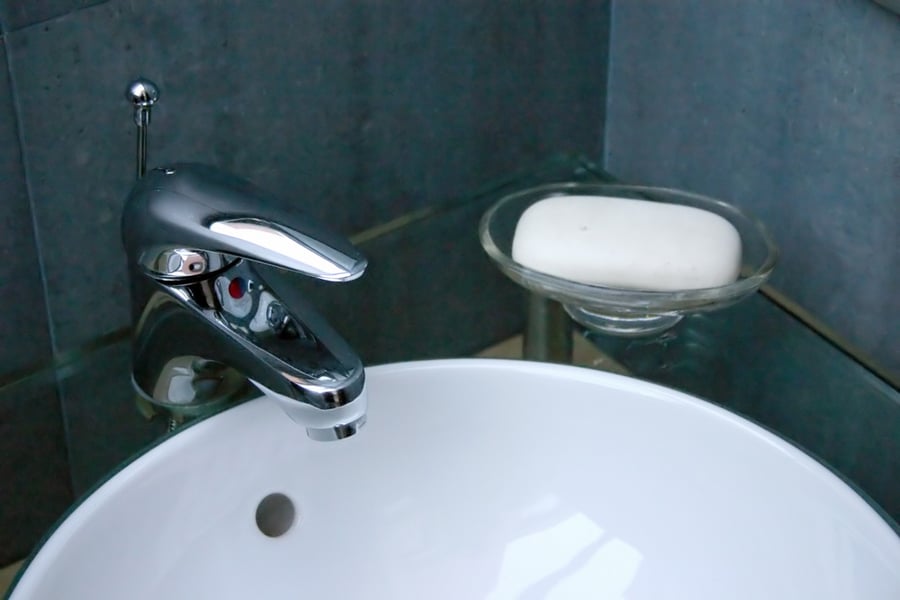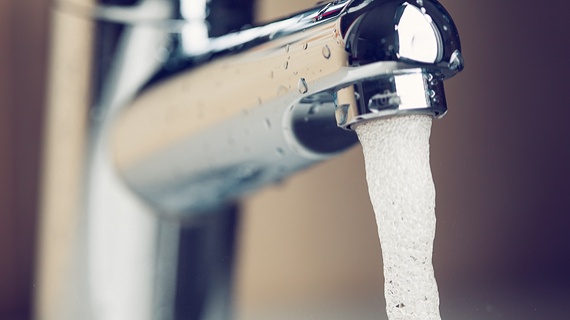
Here’s an important question for you.
Just how is it possible to ensure that your hot water supply is of a temperature hot enough to safeguard against the potential threat of Legionella, yet conversely not too hot so as to risk scalding yourself when you come into direct content with it, via conventional outlets? On the surface it appears one would represent something of a trade off against the other, however the reality of the matter is that dedicated assemblage exists to negate both dangerous situations unfolding. Which of course is good news.
This seemingly priceless piece of equipment is known as a Thermostatic Mixing Valve, or a TMV for short; and is essentially an integral piece of kit which protects the end user from any unnecessary burns, while at the same time not compromising the stored water temperatures which are optimised to ward off the menace of legionella or any other unwanted bacterial presence in your system.
But how does such a thing work?
Relatively simply, as it happens, courtesy of the way the TMV blend the incoming water sources and releases (and subsequently distributes this liquefied form) it at a temperate pre-determined by the individual user/installer from the outset. Covering such fundamental eventualities as shower heads, taps and even bidets, there are numerous scenarios where TMVs come into their own; more especially where those more vulnerable members of society habitually interact with heated water, for example nursing and care homes. Yet across the board, TMVs are a crucial weapon in the on-going fight against Legionella, as well as being the first line of defence against scalding, which is the pressing concern in this particular blog.
A Thermostatic Mixing Valve is, by its very design, designed and constructed in a way which maintains the desired water temperature within a water system, at any one time. And continues to monitor and self-regulate/adjust said temperatures when incoming water pressures and/or flow rates fluctuate. Compare this to an alternative mechanical-influenced mixing valve (which by its definition simply cannot revise its settings to counter sudden changes which affect the supply temperatures, pressure or flow rates), and you begin to see how imperative it is to go down the TMV route. The beauty of them is that as a unit, they’re not in plain sight; typically housed beneath baths and water basins. Having said that, a TMV can be presented as a feature of exposed hot and cold water mixers.
Explaining the nitty gritty….
To briefly recap, the installation of a TMV (which in itself should be fitted in as close proximity as logistically possible to the outlet, and ideally not feed more than a couple) broadly results in the water flow temperature being a maximum of ~43°C. With direct reference to how exactly TMVs work in both principle and practice, the following bullet-points offer a summarised explanation:
- The desired – and pre-determined – water temperature is inputted/stored on the system set-up by the installer
- Thereafter, hot and cold water are permitted to enter the valve’s assemblage
- The thermally-sensitive element within the valve construct expands and contracts automatically
- Above action triggers the side valves (supplying the hot and cold water) to open and close accordingly, therein blending together the correct ratios/volumes of both stored water sources until the pre-established temperature is observed
And just how would this process stop someone being accidentally scalded if, for example, the cold water supply entering the TMV failed?
Very good question. Thankfully the wellbeing-preserving answer is a simple one, which effectively sees the TMV automatically sensing the fault and terminating the flow of water then and there, so as to prevent the discharge of dangerously hot water. Likewise, the same in-built protocols will instantly kick-in should the system note a hot water supply failure, thus avoiding the risk of thermal shock. Of course, a sudden increase in temperature – known as a spike – would also be acknowledged by the TMV’s smart element, and subsequently adapt and distribute water at a safe temperature as a measure of restoring parity. Such unforeseen temperature changes – and the counter-intuitive resolutions pre-programmed into a TMV – are verified by respective TMV schemes which exist to afford end users peace of mind. And moreover, that in the event of unpredicted water temperature changes; these certified products combat the threat of scalding from the get-go.
So, what are the core components of a typical TMV?
Stripped down to their basic infrastructure, a Thermostatic Mixing Valve comprises of the 4 key parts. Namely the ‘thermostatic element, piston, return spring’ and ‘temperature adjustment’ features.
Thermostatic Element - Addressing the presence of the first component, and we’ve pretty much covered this in the previous paragraph (please see above). Suffice to say that this temperature-sensitive element activates a piston which calibrates the proportions of hot and cold water being mixed in the valve, if and when sudden temperature change is observed.
Piston – Attached to the thermostatic element for the most part, this piston is actioned to alter the ratios of hot and cold water flooding the TMV, by way of moving backwards and forwards over the cold and hot ports located in the valve design
Return Spring – This enables the piston to be pushed back and returned to its rest position, should it have been called into service, and once the thermostatic element has cooled and contracted
Temperature Adjustment – A number of TMVs brandish a separate temperature adjustment mechanism, which can be manually facilitated if the user wishes to revise the positioning of the piston functionality; and ergo recalculate the proportions of hot and cold water accessing the valve at this juncture
I’m aware there’s such a thing as a Digital Mixing Valve. How does this differ?
Determined by means of electronic control, digital mixing valves can switch between touch-free and manual management, with the former option seen as providing a greater degree of infection awareness, when considering surface-transmitted bacteria. What’s more, the digital aspect of such valve installations allows the end user to activate additional flushing or thermal disinfection routines, albeit pre-programmed by water treatment specialists with knowledge and experience in this field.
And finally, and to reiterate, in terms of health and safety peace of mind, just how does the existence of TMVs make such a significant difference?
Simply by possessing the inbuilt technical foresight to immediately restrict water temperature disparities, TMVs can actively safeguard against scalding incidents at source. And when you think about the demographics which are more susceptible to scalding, it’s absolutely imperative that our water systems which channel our domestic water supplies around the home (as well as elsewhere in commercial and public service arenas) have such tried and tested mechanisms in place to react to a quickly-changing situation.
Did you know that over three-quarters of severe scalds affect the under-5s, while people aged 65-plus are statistically acknowledged as being the most vulnerable when it comes to recorded fatalities due to burns; with three-quarters the key percentage once more. Generally-speaking research has concluded that on average 20 people die annually, as a direct result of scalds caused by hot bath water, with some 570 suffering scald injuries. Again, those people with either mental or physical disabilities find themselves at greater risk to scalding too, yet the installation of TMVs can reduce these figures.








